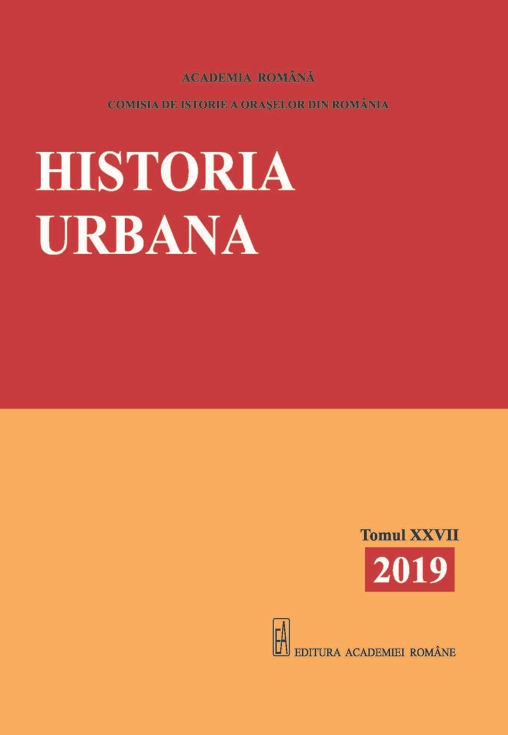Străzile orașului și modernizarea Câmpulungului muscelean (1880–1930)
City Streets and the Modernization of Câmpulung, the Muscel County Seat (1880–1930)
Author(s): Carmen OprescuSubject(s): Local History / Microhistory, 19th Century, Pre-WW I & WW I (1900 -1919), Interwar Period (1920 - 1939)
Published by: Editura Academiei Române
Keywords: Câmpulung; street network; city plans; commercial road; annual fair; railway network; balneal and geo-climatic conditions;
Summary/Abstract: In Câmpulung, the modernization of the street network, as well as of the entire city, was conditioned by both local and regional circumstances. Among these circumstances, the more significant ones are the following: The connections of Câmpulung, developed along the axes Brașov-Pitești-București, Brașov-Târgoviște and Curtea de Argeș-Râmnic. Well before the 19th century, the city had its street network significantly structured by these organically constituted trade routes, especially relevant since the main economic resource of the city originated in commerce and regional goods exchanges. Since its very beginnings, Câmpulung acted as a customs point and hosted an international annual fair which echoed well into contemporary times. In addition, the city was a necessary resting place before or after crossing the mountains on the commercial road through Brașov between Transylvania and the mouths of the Danube. National policies concerning transport and communication networks. New or improved roads were required by newly organized collective transportation services. The expansion of the railway network and the construction of the railway station constituted a major influence in shaping the southern area of the urban street network. The arrival of postal and telecommunication services determined the naming of streets and the numbering of houses. The relocation of the military quarters and of production spaces toward the outskirts of the city. Such major interventions in the socioeconomic fabric of the city generated in turn a renewed perspective on the necessity to improve the urban circulation infrastructure. The balneal and geo-climatic conditions, combined with the city's administrative status as county seat and its proximity to Bucharest. These uniquely intertwined factors acquired for Câmpulung a lasting privileged status in terms of available means of transport and communications, in terms of social standing of its inhabitants and visitors, as well as in terms of its economic potential and administrative capacity. In consequence, the city's successive administrations were expected and were also able to create new streets, to swiftly and decisively apply urban regulations, as well as to consistently pursue urban policies such as aligning houses and streets, setting up commercial venues, paving and embellishing streets, organizing civic squares.The comparative analysis of the 1790–1791 Austrian map with the two published city plans of 1923 and 1926, as well as with the direct experience of the urban territory, have led also to the conclusion that the modernizing process underwent by Câmpulung radically altered its Middle Age street network. This conclusion imposes a great deal of restraint in using these aforementioned plans for emitting or accepting the hypotheses concerning the Middle Age structure of the city, from its genesis onward – while the direct historical documents and the current level of archaeological investigations in the civil urban area are absolutely insufficient.
Journal: Historia Urbana
- Issue Year: XXVII/2019
- Issue No: 27
- Page Range: 39-72
- Page Count: 34
- Language: Romanian
- Content File-PDF

